Tattoo
A tattoo is a form of body modification, made by inserting indelible ink into the dermis layer of the skin to change the pigment. The first written reference to the word, "tattoo" (or Samoan "Tatau") appears in the journal of Joseph Banks, the naturalist aboard Captain Cook's ship the HMS Endeavour: "I shall now mention the way they mark themselves indelibly, each of them is so marked by their humor or disposition".
The word "tattoo" was brought to Europe by the explorer James Cook, when he returned in 1771 from his first voyage to Tahiti and New Zealand. In his narrative of the voyage, he refers to an operation called "tattaw". Before this it had been described as scarring, painting, or staining.[1]
Tattooing has been practiced for centuries in many cultures, particularly in Asia, and spread throughout the world.[citation needed] The Ainu, an indigenous people of Japan, traditionally had facial tattoos. Today, one can find Atayal, Seediq, Truku, and Saisiyat of Taiwan,[2]Berbers of Tamazgha (North Africa), Yoruba, Fulani and Hausa people of Nigeria, and Māoriof New Zealand with facial tattoos.[citation needed]
Tattooing spread among Polynesians and among certain tribal groups in Africa, Borneo,Cambodia, Europe, Japan, the Mentawai Islands, MesoAmerica, New Zealand, North America and South America, the Philippines, and Taiwan.[2] Indeed, the island of Great Britain takes its name from tattooing; Britons translates as "people of the designs", andPicts, the peoples who originally inhabited the northern part of Britain, literally means "the painted people".[3] Despite some taboos surrounding tattooing, the practice continues to be popular in many parts of the world.[citation needed]
Etymology
The Oxford English Dictionary gives the etymology of tattoo as, "In 18th c. tattaow, tattow. From Polynesian tatau. In Tahitian, tatu." The word tatau was introduced as a loan word into English; its pronunciation was changed to conform to English phonology as "tattoo".[4] Sailors on later voyages both introduced the word and reintroduced the concept of tattooing to Europe.[5]
Tattoo enthusiasts may refer to tattoos as "ink", "pieces", "skin art", "tattoo art", "tats", or "work"; to the creators as "tattoo artists", "tattooers", or "tattooists"; and to places where they work as "tattoo shops", "tattoo studios", or "tattoo parlours".
Usage of the terms "skin art", "tattoo art", "pieces", and work" is gaining greater support[citation needed], with mainstream art galleries holding exhibitions of both conventional and custom tattoo designs. Beyond Skin, at the Museum of Croydon, is an example of this as it challenges the stereotypical view of tattoos and who has them. Copyrighted tattoo designs that are mass-produced and sent to tattoo artists are known as "flash", a notable instance of industrial design. Flash sheets are prominently displayed in many tattoo parlors for the purpose of providing both inspiration and ready-made tattoo images to customers.
The Japanese word irezumi means "insertion of ink" and can mean tattoos using tebori, the traditional Japanese hand method, a Western-style machine, or for that matter, any method of tattooing using insertion of ink. The most common word used for traditional Japanese tattoo designs is Horimono. Japanese may use the word "tattoo" to mean non-Japanese styles of tattooing.
In Taiwan, facial tattoos of the Atayal tribe are called "ptasan"; they are used to demonstrate that an adult man can protect his homeland, and that an adult woman is qualified to weave cloth and perform housekeeping.[2]
Anthropologist Ling Roth in 1900 described four methods of skin marking and suggested they be differentiated under the names "tatu", "moko", "cicatrix", and "keloid".[6]
[edit]History
Main article: History of tattooing
Tattooing has been a Eurasian practice at least since Neolithic times. Ötzi the Iceman, dating from the 5th to 4th millennium BC, was found in the Ötz valley in the Alps and had some 57 carbon tattoos consisting of simple dots and lines on his lower spine, behind his left knee, and on his right ankle. These tattoos were thought to be a form of healing because of their placement, which resembles acupuncture.[19] Other mummies bearing tattoos and dating from the end of the 2nd millennium BC have been discovered, such as the Mummy of Amunet from ancient Egypt and the mummies at Pazyryk on the Ukok Plateau.[7]
Pre-Christian Germanic, Celtic and other central and northern European tribes were often heavily tattooed, according to surviving accounts. The Picts were famously tattooed (or scarified) with elaborate, war-inspired black or dark blue woad (or possibly copper for the blue tone) designs. Julius Caesar described these tattoos in Book V of his Gallic Wars (54 BC).
Various other cultures have had their own tattoo traditions, ranging from rubbing cuts and other wounds with ashes, to hand-pricking the skin to insert dyes.[8][9]
Modern tattooing in the Western world has its origins in 16th- through 18th-century maritime expeditions, which promoted contact between explorers and the amerindian tribes and Polynesiansthey encountered. The Polynesian practice, especially, became popular among European sailors, who took the Samoan word tatau to describe the actual tattoo.[10] As sailors traveled abroad and returned home with tattoos inscribed on their bodies, tattoos began to appear in mainstream European, and eventually North American, figurations, as well.[11]
As many tattoos were stimulated by Polynesian and Japanese examples, amateur tattoo artists were in great demand in port cities all over the world, especially by European and American sailors. The first documented professional tattoo artist in the USA was Martin Hildebrandt, a German immigrant who arrived in Boston, Massachusetts in 1846. Between 1861 and 1865, he tattooed soldiers on both sides in the American Civil War. The first documented professional tattooist in Britain was established in Liverpool in the 1870s. Tattooing was an expensive and painful process, and by the 1870s had become a mark of wealth for the crowned heads of Europe.[1]
[edit]Types of tattoos
The American Academy of Dermatology distinguishes 5 types of tattoos:[12] traumatic tattoos, also called "natural tattoos", that result from injuries, especially asphalt from road injuries or pencil lead; amateur tattoos; professional tattoos, both via traditional methods and modern tattoo machines; cosmetic tattoos, also known as "permanent makeup"; and medical tattoos.
Amateur and professional tattoos
Many tattoos serve as rites of passage, marks of status and rank, symbols of religious and spiritual devotion, decorations for bravery, sexual lures and marks of fertility, pledges of love, punishment,amulets and talismans, protection, and as the marks of outcasts, slaves and convicts. The symbolism and impact of tattoos varies in different places and cultures. Tattoos may show how a person feels about a relative (commonly mother/father or daughter/son) or about an unrelated person.[14] Today, people choose to be tattooed for artistic, cosmetic, sentimental/memorial,religious, and magical reasons, and to symbolize their belonging to or identification with particular groups, including criminal gangs (see criminal tattoos) or a particular ethnic group or law-abiding subculture. Some Māori still choose to wear intricate moko on their faces. In Cambodia, Laos, andThailand, the yantra tattoo is used for protection against evil and to increase luck.[citation needed]
In the Philippines certain tribal groups believe tattoos have magical qualities, and help to protect their bearers. Most traditional tattooing in the Philippines is related to the bearer's accomplishments in life or rank in the tribe.[citation needed]
Extensive decorative tattooing is common among members of traditional freak shows and by performance artists who follow in their tradition.[citation needed]
[edit]Identification
People have also been forcibly tattooed. A well-known example is the identification system for inmates in Nazi concentration camps during the Holocaust. Tattoos have also been used for identification in other ways.[citation needed] For example, during the Roman Empire, Roman soldiers were required by law to have identifying tattoos on their hands in order to make it difficult to hide if they deserted. Gladiators and slaves were likewise tattooed, exported slaves were tattooed with the words "tax paid", and it was a common practice to tattoo "Stop me, I'm a runaway" on their foreheads. Emperor Constantine I banned tattooing the face around AD 330 and the Second Council of Nicaea banned all body markings as a pagan practice in AD 787.[15]
In the period of early contact between the Māori and Europeans, the Maori people were hunted for their moko tattoos and decapitated to provide souvenirs of the New World.[citation needed] Moko tattoos were facial designs worn by women and men to indicate their lineage, social position, and status within the tribe. The tattoo art was a sacred marker of identity among the Maori and also referred to as a vehicle for storing one's tapu, or spiritual being, in the afterlife.[11]
Tattoos are sometimes used by forensic pathologists to help them identify burned, putrefied, or mutilated bodies. As tattoo pigment lies encapsulated deep in the skin, tattoos are not easily destroyed even when the skin is burned.[citation needed]
Tattoos are also placed on animals, though rarely for decorative reasons. Pets, show animals, Thoroughbred horses, and livestock are sometimes tattooed with identification and other marks. Pet dogs and cats are often tattooed with a serial number (usually in the ear, or on the inner thigh) via which their owners can be identified.[citation needed]
Also, animals are occasionally tattooed to prevent sunburn (on the nose, for example). Such tattoos are often performed by a veterinarian, and in most cases the animals are anesthetized during the process. Branding is used for similar reasons and is often performed without anesthesia, but is different from tattooing as no ink or dye is inserted during the process.[citation needed]
[edit]Cosmetic
The cosmetic surgery industry continues to see a trend of increased popularity for both surgical and noninvasive procedures (Gimlin 2002; Sullivan 2001).
Main article: Permanent makeup
When used as a form of cosmetics, tattooing includes permanent makeup and hiding or neutralizing skin discolorations. Permanent makeup is the use of tattoos to enhance eyebrows, lips (liner and/or lipstick), eyes (liner), and even moles, usually with natural colors, as the designs are intended to resemble makeup.[citation needed]
[edit]Medical
Main article: Medical tattoo
Medical tattoos are used to ensure instruments are properly located for repeated application of radiotherapy and for the areola in some forms of breast reconstruction. Tattooing has also been used to convey medical information about the wearer (e.g., blood group, medical condition, etc.). Additionally, tattoos are used in skin tones to cover vitiligo, a skin pigmentation disorder.[citation needed]
[edit]Prevalence
Since the 1990s, tattoos have become a mainstream part of global and Western fashion, common among both sexes, to all economic classes, and to age groups from the later teen years to middle age. For many young Americans, the tattoo has taken on a decidedly different meaning than for previous generations. The tattoo has "undergone dramatic redefinition" and has shifted from a form of deviance to an acceptable form of expression.[16] In 2010, 25% of Australians under age 30 had tattoos.[17] Mattel released a tattooed Barbie dollin 2011, which was widely accepted, although it did attract some controversy.[18]
Tattoos have experienced a resurgence in popularity in many parts of the world, particularly in Europe, Japan, and North and South America. The growth in tattoo culture has seen an influx of new artists into the industry, many of whom have technical and fine arts training. Coupled with advancements in tattoo pigments and the ongoing refinement of the equipment used for tattooing, this has led to an improvement in the quality of tattoos being produced.[19]
During the 2000s (decade), the presence of tattoos became evident within pop culture, inspiring television shows such as A&E's Inked and TLC's Miami Ink and LA Ink. The decoration of blues singer Janis Joplin with a wrist let and a small heart on her left breast, by the San Francisco tattoo artist Lyle Tuttle, has been called a seminal moment in the popular acceptance of tattoos as art. Formal interest in the art of the tattoo became prominent in the 1990s through the beginning of the 21st century.[20]
In many traditional cultures, tattooing has also enjoyed a resurgence, partially in deference to cultural heritage.[citation needed]
Contemporary art exhibitions and visual art institutions have featured tattoos as art through such means as displaying tattoo flash, examining the works of tattoo artists, or otherwise incorporating examples of body art into mainstream exhibits. One such 2009 Chicago exhibition, Freaks & Flash, featured both examples of historic body art as well as the tattoo artists who produced it.[21]
Many studies have been done of the tattooed population and society's view of tattoos. In June 2006, the Journal of the American Academy of Dermatology published the results of a telephone survey which took place in 2004. It found that 36% of Americans ages 18–29, 24% of those 30-40, and 15% of those 41-51 had a tattoo.[22] In September 2006, the Pew Research Centerconducted a telephone survey which found that 36% of Americans ages 18–25, 40% of those 26-40 and 10% of those 41-64 had a tattoo. They concluded that Generation X and Generation Y are not afraid to express themselves through their appearance, and tattoos are the most popular form of self-expression.[23] In January 2008, a survey conducted online by Harris Interactive estimated that 14% of all adults in the United States have a tattoo, slightly down from 2003, when 16% had a tattoo. Among age groups, 9% of those ages 18–24, 32% of those 25-29, 25% of those 30-39 and 12% of those 40-49 have tattoos, as do 8% of those 50-64. Men are slightly more likely to have a tattoo than women.
[edit]Associations
The Government of Meiji Japan had outlawed tattoos in the 19th century, a prohibition that stood for 70 years before being repealed in 1948.[24] As of June 6, 2012 all new tattoos are forbidden for employees of the city of Osaka. Existing tattoos are required to be covered with proper clothing. The regulations were added to Osaka's ethical codes, and employees with tattoos were encouraged to have them removed. This was done because the strong connection of tattoos with the yakuza, or Japanese organized crime, after an Osaka official in February 2012 threatened a schoolchild by showing his tattoo.
Current cultural understandings of tattoos in Europe and North America have been greatly influenced by long-standing stereotypes based on deviant social groups in the 19th and 20th centuries. Particularly in North America tattoos have been associated with stereotypes, folklore, and racism.[25] Not until the 1960s and 1970s did people associate tattoos with such societal outcasts as bikers and prisoners.[26] Today, in the United States many prisoners and criminal gangs use distinctive tattoos to indicate facts about theircriminal behavior, prison sentences, and organizational affiliation.[27] A teardrop tattoo, for example, can be symbolic of murder, or each tear represents the death of a friend. At the same time, members of the U.S. military have an equally well-established and longstandinghistory of tattooing to indicate military units, battles, kills, etc., an association which remains widespread among older Americans. Tattooing is also common in the British Armed Forces. A study conducted in 2004 among 500 adults between ages 18 and 50 found an explicit link between tattooing and criminality. 72 percent of respondents with face, neck, hands, or fingers tattoos have spent more than three days in jail, compared to 6 percent of the non-tattooed population.[28][29] Tattoos have however by 2013 received qualified acceptance in white collar professions in America.[30]
The Romans tattooed criminals and slaves, and in the 19th century released US convicts and British army deserters were identified by tattoos. Prisoners in Siberian and Nazi concentration camps were tattooed with an identification number. Today, many prison inmates still tattoo themselves as an indication of time spent in prison.[1]
Native Americans also used tattoos to represent their tribe.
Insofar as this cultural or subcultural use of tattoos predates the widespread popularity of tattoos in the general population, tattoos are still associated with criminality. Tattoos on the face in the shape of teardrops are usually associated with how many people a person has murdered. Although the general acceptance of tattoos is on the rise in Western society, they still carry a heavy stigma among certain social groups. Tattoos are generally considered an important part of the culture of the Russian mafia.
The prevalence of women in the tattoo industry, along with larger numbers of women bearing tattoos, appears to be changing negative perceptions. A study of "at-risk" (as defined by school absenteeism and truancy) adolescent girls showed a positive correlation between body modification and negative feelings towards the body and low self-esteem; however, the study also demonstrated that a strong motive for body modification is the search for "self and attempts to attain mastery and control over the body in an age of increasing alienation."[31]
[edit]Religious perspectives
[edit]Christianity
Historically, a decline in traditional tribal tattooing in Europe occurred with the spread of Christianity.[citation needed] However, some Christian groups, such as the Knights of St. John of Malta, sported tattoos to show their allegiance. A decline often occurred in other cultures following European efforts to convert aboriginal and indigenous people to Western religious and cultural practices that held tattooing to be a "pagan" or "heathen" activity. Within some traditional indigenous cultures, tattooing takes place within the context of a rite of passage between adolescence and adulthood. In the book of Leviticus 19:28, the Bible forbids tattoos.
There is no consistent Christian view on tattooing. The early Christian Montanist movement practiced tattooing as putting signs or seals of God's name according to Rev. 7:3; 9:4; 13:16; 14:1; 20:4; 22:4.
The majority of Christians do not take issue with the practice, while a minority uphold the Hebrew view against tattoos (see below) based on Leviticus. Tattoos of Christian symbols are common. When on pilgrimage, some Christians get a small tattoo dating the year and a small cross. This is usually done on the forearm.
There is no prohibition against tattoo within the Catholic Church, provided that the tattoo is not an image that is sacrilegious, blasphemous, or obscene. At the Catholic council of Calcuth in Northumberland in AD 786, Christians who received a tattoo "for the sake of God" (i.e., a religious tattoo in the form of a cross, a monogramme of Christ, or a saint's name or image) were commended as praiseworthy.[citation needed]
Catholic Croats of Bosnia and Herzegovina used tattooing, especially of children, for perceived protection against forced conversion to Islam during the Ottoman occupation of Bosnia and Herzegovina (see Christian tattooing in Bosnia and Herzegovina). This form of tattooing continued long past its original motivation. Tattooing was performed during springtime or during special religious celebrations such as the Feast of St. Joseph, and consisted mostly of Christian crosses on hands, fingers, forearms, and below the neck and on the chest.[32][33][34] In India many Christians tattoos Cross Sign under thumb area.
Coptic Christians who live in Egypt tattoo themselves with the symbols of Coptic crosses on their right wrists.
[edit]Islam
Tattoos are considered forbidden in Sunni Islam, but are permissible in Shia Islam. According to the book of Sunni traditions, Sahih Bukhari, "The Prophet forbade [...] mutilation (or maiming) of bodies."[35] Several Sunni Muslim scholars believe tattooing is a sin because it involves changing the creation of God (Surah 4 Verse 117-120).[36] There is, however, difference of scholarly Sunni Muslim opinion as to the reason why tattoos are forbidden.[37]
[edit]Judaism
Tattoos are forbidden in Judaism[38] based on the Torah (Leviticus 19:28): "You shall not make gashes in your flesh for the dead, or incise any marks on yourselves: I am the Lord." The prohibition is explained by contemporary rabbis as part of a general prohibition on body modification (with the exception of circumcision) that does not serve a medical purpose (such as to correct a deformity).Maimonides, a leading 12th-century scholar of Jewish law and thought, explains the prohibition against tattoos as a Jewish response to paganism.
In modern times, the association of tattoos with Nazi concentration camps and the Holocaust has added another level of revulsion to the practice of tattooing, even among many otherwise fairly secular Jews.[citation needed] It is a common misconception that anyone bearing a tattoo is not permitted to be buried in a Jewish cemetery.[39]
[edit]Neopagan
Neopagans can use the process and the outcome of tattooing as an expression or representation of their beliefs.[40] Many tattooists' websites offer pagan images as examples of the kinds of artwork which they provide. At least one Wiccan Tradition uses a tattoo as a mark of Initiation, although it is an entitlement, not a requirement.
[edit]Hinduism
In Hinduism the marking of the forehead is encouraged as it enhances spiritual well-being and is one of the chakras on the body. Many Hindu women tattoo their faces with dots especially around the chin and eyes to ward off evil and enhance their beauty. The local regional tribes use tattoos to distinguish between certain clans and ethnic groups. One Hindu Goddess Lirbai mata is depicted with tattooed arms and legs. She is venerated by the Marwari and Rabari ethnic groups whose women also tattoo their bodies in this fashion. Many Hindu men and women tattoo OM on their hands or arms. This symbols protects them from evil and bad karma. In Rajasthan and Gujarat, legs, arms and hands and in Maharashtra face and hands only considered as a desired place. These tattoos are called "bindi thandolroups also encourage their women to tattoo their legs and arms. Khodiyar Mata is often depicted with tattooed arms and legs. Many Hindu Gods have signs on their hands such as a swastika - these sometimes are also tattooed on hands and arms for good luck.
[edit]Procedure
Tattooing involves the placement of pigment into the skin's dermis, the layer of dermal tissue underlying the epidermis. After initial injection, pigment is dispersed throughout ahomogenized damaged layer down through the epidermis and upper dermis, in both of which the presence of foreign material activates the immune system's phagocytes to engulf the pigment particles. As healing proceeds, the damaged epidermis flakes away (eliminating surface pigment) while deeper in the skin granulation tissue forms, which is later converted to connective tissue by collagen growth. This mends the upper dermis, where pigment remains trapped within fibroblasts, ultimately concentrating in a layer just below the dermis/epidermis boundary. Its presence there is stable, but in the long term (decades) the pigment tends to migrate deeper into the dermis, accounting for the degraded detail of old tattoos.[41]
Some tribal cultures traditionally created tattoos by cutting designs into the skin and rubbing the resulting wound with ink, ashes or other agents; some cultures continue this practice, which may be an adjunct to scarification. Some cultures create tattooed marks by hand-tapping the ink into the skin using sharpened sticks or animal bones (made like needles) with clay formed disks or, in modern times, needles. Traditional Japanese tattoos (irezumi) are still "hand-poked," that is, the ink is inserted beneath the skin using non-electrical, hand-made and hand held tools with needles of sharpened bamboo or steel. This method is known as tebori.
Traditional Hawaiian hand-tapped tattoos are experiencing a renaissance, after the practice was nearly extinguished in the years following Western contact. The process involves lengthy protocols and prayers and is considered a sacred rite more than an application of artwork. The tattooist chooses the design, rather than the wearer, based on genealogical information. Each design is symbolic of the wearer's personal responsibility and role in the community. Tools are hand-carved from bone or tusk without the use of metal.[42]
The most common method of tattooing in modern times is the electric tattoo machine, which inserts ink into the skin via a single needle or a group of needles that are soldered onto a bar, which is attached to an oscillating unit. The unit rapidly and repeatedly drives the needles in and out of the skin, usually 80 to 150 times a second. This modern procedure is ordinarily sanitary. The needles are single-use needles that come packaged individually. The tattoo artist must wash his or her hands and must also wash the area that will be tattooed. Gloves must be worn at all times and the wound must be wiped frequently with a wet disposable towel of some kind. The equipment must be sterilized in a certified autoclave before and after every use.
Prices for this service vary widely globally and locally, depending on the complexity of the tattoo, the skill and expertise of the artist, the attitude of the customer, the costs of running a business, the economics of supply and demand, etc. The time it takes to get a tattoo is in proportion with its size and complexity. A small one of simple design might take 15 minutes, whereas an elaborate sleeve tattoo or back piece requires multiple sessions that may consist of several hours at a time.
In 1891 the first electric tattoo needle was invented in New York City by modifying Thomas Edison's electric engraving pen. This made the process cheaper and faster; it was taken up by the poor and abandoned by the rich. O'Reilly's machine was based on the rotary technology of the electric engraving device invented by Thomas Edison.[1] Modern tattoo machines use electromagnetic coils. The first coil machine was patented by Thomas Riley in London in 1891, using a single coil. The first twin-coil machine, the predecessor of the modern configuration, was invented by another Englishman, Alfred Charles South of London, in 1899.
Another tattoo machine was developed 1970-1978 by the German tattoo artists Horst Heinrich Streckenbach[43] (1929–2001) and Manfred Kohrs.[44]
[edit]Dyes and pigments
Main article: Tattoo ink
Early tattoo inks were obtained directly from nature and were extremely limited in pigment variety. In ancient Hawaii, for example, kukui nut ash was blended with coconut oil to produce an ebony ink.[42] Today, an almost unlimited number of colors and shades of tattoo ink are mass-produced and sold to parlors worldwide. Tattoo artists commonly mix these inks to create their own unique pigments.[citation needed]
A wide range of dyes and pigments can be used in tattoos, from inorganic materials liketitanium dioxide and iron oxides to carbon black, azo dyes, and acridine, quinoline,phthalocyanine and naphthol derivatives, dyes made from ash, and other mixtures. Iron oxide pigments are used in greater extent in cosmetic tattooing.[citation needed]
Modern tattooing inks are carbon-based pigments that have uses outside of commercial tattoo applications.
Concern has been expressed[45] over the interaction between magnetic resonance imaging(MRI) procedures and tattoo pigments, some of which contain trace metals. The magnetic fields produced by MRI machines interact with these metals, including nonferrous metal particles, and while rare, are capable of causing first-degree or second-degree burns[46] or distortions in the image. The type and density of the ink as well as shape of the tattoo may increase the risk, particularly if the shape approximates an RF pick-up loop.[47] The television show MythBusters tested the hypothesis, and found a slight interaction between commonly used tattoo inks and MRI. The interaction was stronger with inks containing high levels of iron oxide.[48]
[edit]Studio hygiene
[edit]Procedures
The properly equipped tattoo studio will usebiohazard containers for objects that have come into contact with blood or bodily fluids,sharps containers for old needles, and an autoclave for sterilizing tools.[49] Certain jurisdictions also require studios by law to have a sink in the work area supplied with both hot and cold water.
Proper hygiene requires a body modification artist to wash his or her hands before starting to prepare a client for the stencil, between clients, and at any other time when cross contamination can occur. The use of single use disposable gloves is also mandatory. Also, disposable gloves should be changed after each stage of tattooing; the same gloves should not be used to clean the tattoo station, tattoo the client, and clean the tattoo. In some states and countries it is illegal to tattoo a minor even with parental consent, and (except in the case of medical tattoos) it is forbidden to tattoo impaired persons, people with contraindicated skin conditions, those who are pregnant or nursing, those incapable of consent due to mental incapacity, or those under the influence of alcohol or drugs.
Before the tattooing begins the client is asked to approve the final position of the applied stencil. After approval is given the artist will open new, sterile needle packages in front of the client, and always use new, sterile, or sterile disposable instruments and supplies, and fresh ink for each session (loaded into disposable ink caps which are discarded after each client). Also, all areas which may be touched with contaminated gloves will be wrapped in clear plastic to prevent cross-contamination. Equipment that cannot be autoclaved (such as countertops, machines, and furniture) will be wiped with an approved disinfectant.[50]
[edit]Incentives for continuing education
Membership in professional organizations or certificates of appreciation/achievement generally help artists to be aware of the latest trends. However, many of the most notable tattooists do not belong to any association.[citation needed]
[edit]Training and certification requirements
While specific requirements to become a tattooist vary between jurisdictions, many mandate only formal training in blood borne pathogens and cross contamination. The local department of health regulates tattoo studios in many jurisdictions.[citation needed]
For example, according to the health departments in Oregon and Hawaii, tattoo artists in these states are required to take and pass a test ascertaining their knowledge of health and safety precautions as well as the current state regulations. Performing a tattoo in Oregon without a proper and current license or in an unlicensed facility is a felony offense. Tattooing was legalized in New York City in 1997,[51] and in Massachusetts and Oklahoma between 2002 and 2006.[citation needed]
[edit]Aftercare
Tattoo artists, and people with tattoos, vary widely in their preferred methods of caring for new tattoos. Some artists recommend keeping a new tattoo wrapped for the first 24 hours, while others suggest removing temporary bandaging after two hours or less to allow the skin to "breathe". Many tattooists advise against allowing too much contact with hot tub or pool water, or soaking in a tub for the first two weeks. This is to prevent the tattoo ink from washing out or fading due to over-hydration, and to avoid infection from exposure to bacteria. In contrast, other artists suggest that a new tattoo be bathed in very hot water early.
General consensus for care advises against removing the flakes or scab that may form on a new tattoo, and avoiding exposing one's tattoo to the sun for extended periods for at least 3 weeks; both of these can contribute to fading of the image. It is agreed that a new tattoo needs to be kept clean. Various products may be recommended for application to the skin, ranging from those intended for the treatment of cuts, burns and scrapes, to Aquaphor,Bepanthen, cocoa butter, A&D, hemp, lanolin, or salves.[52] Oil based ointments are almost always recommended for use on very thin layers due to their inability to evaporate and therefore over-hydrate the already perforated skin. In recent years, specific commercial products have been developed for tattoo aftercare. Although opinions about these products vary, there is near total agreement that either alone or in addition to some other product, soap and warm water work well to keep a tattoo clean and free from infection.[53]
Ultimately, the amount of ink that remains in the skin throughout the healing process determines, in large part, how robust the final tattoo will look. If a tattoo becomes infected (uncommon, but possible if one neglects to properly clean their tattoo) or the flakes (possibly a scab) falls off too soon (e.g., if it absorbs too much water and sloughs off early or is picked or scraped off), then the ink will not be properly fixed in the skin and the final image will be negatively affected.[citation needed]
[edit]Health risks
Main article: Tattoo medical issues
Because it requires breaking the skin barrier, tattooing may carry health risks, including infection and allergic reactions. Modern tattooists reduce such risks by following universal precautions, working with single-use items, and sterilizing their equipment after each use. Many jurisdictions require that tattooists have blood-borne pathogen training, such as that provided through the Red Cross andOSHA. As of 2009 in the United States, there have been no reported cases of HIV contracted via commercially applied tattooing processes.[54]
In amateur tattooing, such as that practiced in prisons, however, there is an elevated risk of infection. Infections that can theoretically be transmitted by the use of unsterilized tattoo equipment or contaminated ink include surface infections of the skin, fungal infections, some forms of hepatitis,herpes simplex virus, HIV, staph, tetanus, and tuberculosis.[55]
Tattoo inks have been described as "remarkably nonreactive histologically".[41] However, cases of allergic reactions to tattoo inks, particularly certain colours, have been medically documented. This is sometimes due to the presence of nickel in an ink pigment, which triggers a common metal allergy. Occasionally, when a blood vessel is punctured during the tattooing procedure, a bruise/hematomamay appear.
[edit]Tattoo removal
Main article: Tattoo removal
While tattoos are considered permanent, it is sometimes possible to remove them, fully or partially, with laser treatments. Typically, black and some colored inks can be removed more completely than inks of other colors. The expense and pain associated with removing tattoos are typically greater than the expense and pain associated with applying them. Pre-laser tattoo removal methods include dermabrasion, salabrasion (scrubbing the skin with salt), cryosurgery, and excision - which is sometimes still used along, withskin grafts for larger tattoos. These older methods, however, have been nearly completely replaced by laser removal treatment options.[56]
[edit]Temporary tattoos
Main article: Temporary tattoo
Temporary tattoos are popular with models and children as they involve no permanent alteration of the skin but produce a similar appearance that can last anywhere from a few days to several weeks. The most common style is a type of body sticker similar to a decal, which is typically transferred to the skin using water. Although the design is waterproof, it can be removed easily with oil-based creams. Originally inserted as a prize in bubble gum packages, they consisted of a poor quality ink transfer that would easily come off with water or rubbing. Today's vegetable dye temporaries can look extremely realistic and adhere up to 3 weeks because of a layer of glue similar to that found on anadhesive bandage.[citation needed]
[edit]Henna tattoos
Main article: Mehndi
Henna tattoos and silver nitrate stains that appear when exposed to ultraviolet light can take up to two weeks to fade from the skin. Silver nitrate is, however, a toxic substance and should not be used on skin.[citation needed]
Temporary airbrush tattoos (TATs) are applied by covering the skin with a stencil and spraying the skin with ink. In the past, this form of tattoo only lasted about a week. With the newest inks, tattoos can reasonably last for up to two weeks. Airbrush tattoos are generally sprayed with cosmetic paints. The ease of removal is a factor in their growing popularity. Unlike henna tattoos, the cosmetic paints can be rubbed off with isopropyl alcohol.[citation needed]
[edit]Ballpoint pen tattoos
Main article: Ballpoint pen artwork
Ballpoint pens are another consideration for creating body art for recreational, decorative, and commercial purposes. Ballpoint pen artists have made appearances at events to draw on guests, and have been hired to provide temporary tattoos for film and video productions.[57] Ink is applied directly to skin in a manner that has been described as similar to that of application with an actual tattoo machine. In fact, professional tattoo artists are known to also use ballpoints to create artwork on surfaces other than skin, including theflash-art created as display samples in tattoo studios.[58]
Ballpoint tattoos can be left to fade at a natural rate or washed off at the wearer's discretion, and represent an appealing option for people who may not care for a permanent tattoo, but appreciate the imagery nonetheless.[59] The manufacturing and content of ballpoint inks are regulated and ink formulas are said to be non-toxic, perhaps because of ballpoint pens' prevalence among students and children, but this is a topic of debate.[60] Folklore suggests that prison inmates modify ballpoint pens into actual tattoo machines, for use while incarcerated, and some amount of gang-affiliated tattoos may have been created in this manner.[citation needed]




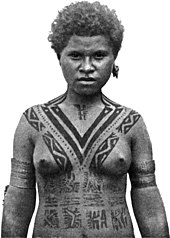

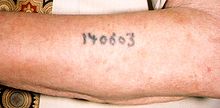
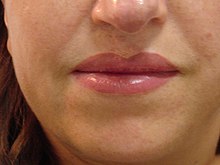
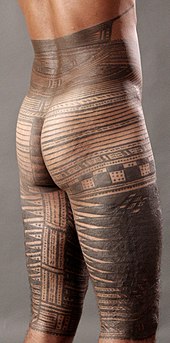
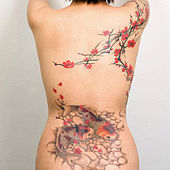
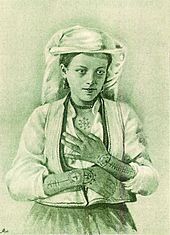

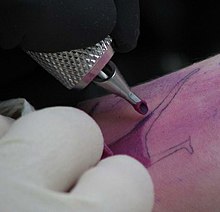





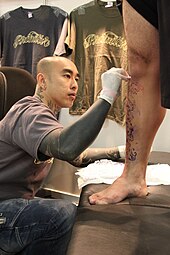


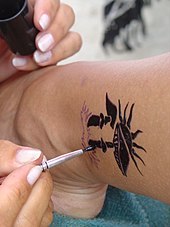
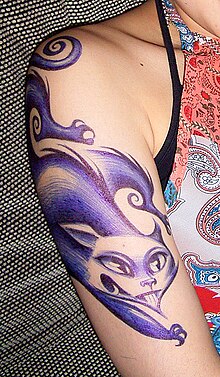
No comments:
Post a Comment